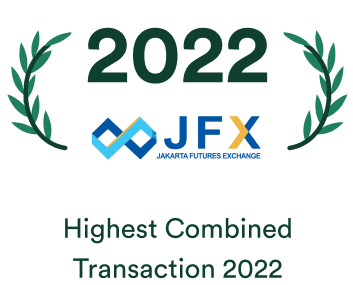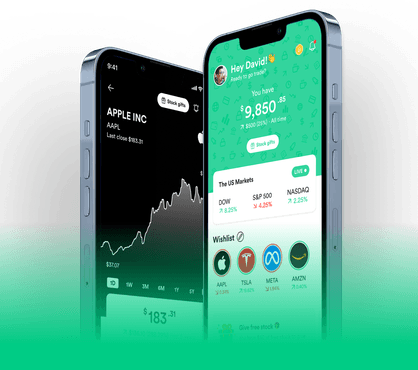Many new investors assume dividends are meant to be taken as cash. But there’s a smarter way to build wealth over time — dividend reinvestment.
Instead of withdrawing your dividend payments, this strategy uses them to buy additional shares of the same company or other investments. Over time, reinvested dividends can create a powerful compounding effect — the very principle that turns modest returns into significant long-term growth.
Let’s break down what dividend reinvestment is, how compounding works, and when it makes sense for your investment strategy.
What Is Dividend Reinvestment?
Dividend reinvestment is a strategy where investors use their dividend payouts to purchase more shares of the same company rather than taking the dividends in cash.
Each reinvestment increases your total share count, which means the next round of dividends will be larger. Over time, this creates a snowball effect — your dividends start earning dividends of their own.
Compounding: The Key to Long-Term Growth
The power of compounding is the foundation of dividend reinvestment. It’s the process where your earnings start generating additional earnings over time.
Let’s look at a simple simulation:
- Suppose you invest $10,000 in a stock that pays a 5% annual dividend.
- If you withdraw the dividend every year, you’ll earn $500 annually — consistent, but flat.
- If you reinvest the dividends, your investment base grows to $10,500 in the second year. The next dividend payout becomes $525, not $500.
- After 10 years, your investment could grow to nearly $16,300 instead of just $15,000 — purely from compounding.
- Stretch that to 20 years, and the reinvested amount grows to over $26,500, compared to $20,000 without reinvestment.
That extra $6,500 didn’t come from additional contributions — it came from time and compounding. The longer you stay invested, the more powerful the effect becomes.
Reinvesting Dividends vs Taking Cash
Reinvesting dividends isn’t a one-size-fits-all strategy. It depends on your goals, time horizon, and financial needs.
Taking Cash Dividends
- Best for retirees or investors who rely on dividends for regular income.
- Can be used to cover living expenses or reinvested elsewhere in lower-risk assets like bonds.
Reinvesting Dividends
- Ideal for long-term investors, especially younger ones with decades to grow.
- Allows small portfolios to grow substantially over time.
- Builds investment discipline — you’re automatically adding to your holdings without extra effort.
Advantages of Dividend Reinvestment
- Accelerates Capital Growth
Each dividend automatically buys more shares, increasing your overall ownership and future earning potential. - Automatic Discipline
Reinvestment encourages consistency, allowing you to stay invested regardless of market conditions. - Low or No Fees
Many brokerages and apps offer automatic dividend reinvestment plans (DRIPs) with no additional transaction costs. - Gradual Diversification
Reinvested dividends can be allocated into other assets like ETFs or dividend-focused funds to balance your portfolio. - Inflation Protection
Reinvesting helps your portfolio grow faster than inflation, maintaining your purchasing power over time.
Risks and Considerations
While dividend reinvestment can be powerful, it’s not without risks.
- Reinvesting into a declining stock: If the company’s fundamentals weaken, you could end up buying more of a poor-performing asset.
- Not all companies pay consistent dividends: Growth-focused companies like Tesla or Amazon often reinvest profits back into expansion rather than distributing them.
- Tax implications: In most countries, dividend income is still taxable even if it’s automatically reinvested.
- Over-concentration risk: Continuously reinvesting in the same stock may overweight your portfolio toward one company or sector.
The key is to monitor your portfolio regularly and ensure your reinvestment aligns with your broader strategy.
Practical Tips for Beginners
According to Investopedia and financial experts, here are a few best practices for dividend reinvestment:
- Choose companies with stable dividend histories.
Look for firms with consistent payouts — think consumer goods, utilities, or healthcare giants like Coca-Cola, Procter & Gamble, or Johnson & Johnson. - Use auto-reinvest features.
Most global trading platforms now offer automatic reinvestment options for U.S. and international stocks. - Diversify with ETFs.
Instead of reinvesting all dividends back into one stock, consider directing a portion to dividend ETFs for balanced growth. - Stay long-term focused.
Compounding takes time — the real benefits show up after years, not months. - Match reinvestment to your risk profile.
Conservative investors may prefer high-yield, stable dividend stocks. Aggressive investors can mix in growth stocks for higher potential returns. - Combine with dollar-cost averaging (DCA).
Using DCA alongside dividend reinvestment can further smooth out market volatility and enhance long-term returns.
Conclusion
Dividend reinvestment is one of the most powerful yet simple wealth-building strategies available to investors. By letting your dividends buy more shares, you harness the magic of compounding — your money starts working harder for you with every passing year.
For investors with a long time horizon, this strategy can be a cornerstone of financial independence. It turns passive income into an engine of exponential growth.
So instead of cashing out every dividend, consider reinvesting it. The small, consistent actions you take today could fuel a much larger portfolio tomorrow.
FAQ
1. Is dividend reinvestment better than taking cash?
For long-term investors, yes. Reinvesting dividends helps compound returns over time. However, if you rely on dividends for income, taking cash may be more suitable.
2. Do all stocks pay dividends?
No. Growth-oriented companies like Nvidia or Tesla typically reinvest profits into expansion, while blue-chip firms such as Coca-Cola or PepsiCo consistently pay dividends to shareholders.
Disclaimer
Gotrade is the trading name of Gotrade Securities Inc., which is registered with and supervised by the Labuan Financial Services Authority (LFSA). This content is for educational purposes only and does not constitute financial advice. Always do your own research (DYOR) before investing.











